Affiliate Disclosure: This blog may receive a small commission at no extra cost to you, for purchases made via affiliate links. If you decide to support our blog in this way, I thank you!
Ann Miller is thought of as high camp to many, but I admire her resilient legacy. I became aware of her in the late 1980s when I was in my young adulthood, a stage in my life of lamenting bypassed career tracks. My thwarted imagined future was in the world of dance.
As much as I was still taking ballet, jazz, salsa, African, and any other dance form I could find, I was most fascinated by the energy that tap dancing exuded. It was the dance form that pulled a depression-era audience out of its glum existence.
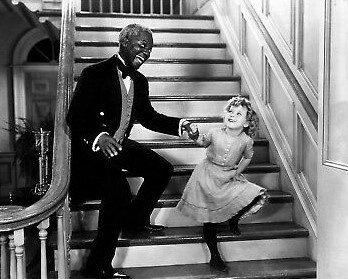 It was Bo Jangles and Shirley Temple crossing racial and age boundaries, uniting in a joyful bond. It was Fred Astaire and Ginger Rogers gliding on buoyant romance. It was the athletic Eleanor Powell radiating strength. It was exuberant Ann.
It was Bo Jangles and Shirley Temple crossing racial and age boundaries, uniting in a joyful bond. It was Fred Astaire and Ginger Rogers gliding on buoyant romance. It was the athletic Eleanor Powell radiating strength. It was exuberant Ann.
I first saw Ann Miller perform to Cole Porter’s Too Darn Hot, a dance scene in the 1953 musical Kiss Me, Kate. She brought something entirely goddess-like to the film. 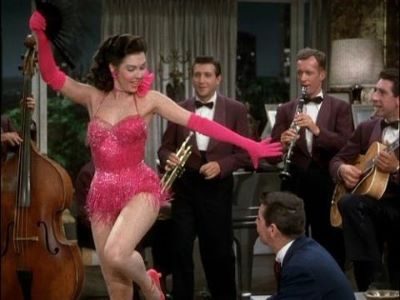 Her movements commanded desire and awe. I hadn’t known tap dance could be sultry. The flashy red outfit helped. The closest I could come to looking like that was to die my hair dark brown (mistake), buy a red one-piece swimsuit (still my all-time favorite), sport long opera gloves and crimson lipstick, and dance even more often. Also, it would help if I could keep an extra wide, blaringly bright smile on my face. I wouldn’t be able to do that without being fully exhausted every other moment of the day.
Her movements commanded desire and awe. I hadn’t known tap dance could be sultry. The flashy red outfit helped. The closest I could come to looking like that was to die my hair dark brown (mistake), buy a red one-piece swimsuit (still my all-time favorite), sport long opera gloves and crimson lipstick, and dance even more often. Also, it would help if I could keep an extra wide, blaringly bright smile on my face. I wouldn’t be able to do that without being fully exhausted every other moment of the day.
I lacked the dire necessity to work as a child and the yearning for stardom that drove Ann Miller. She was born Johnnie Lucille Collier in Houston Texas, April 12, 1923 and had danced her way into a Hollywood studio contract by the age of 13, unbeknownst to that studio. Like many highly successful stars, she did not have a carefree childhood, although by all appearances, she loved nothing more than dancing.
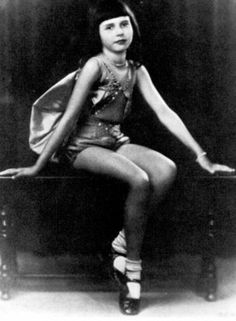
She worked willingly to support herself and her deaf mother, Clara Birdwell, who couldn’t hold a job. Clara was not a hard-driving stage mom, but she had enrolled her three-year-old daughter in dance classes in order to strengthen her legs, weakened from rickets.
Lucille took to quick-style dancing easily and was making money performing at local functions by the time she was seven. When she was about 10, her mother left her philandering father and took her to Los Angeles where she was schooled at home and continued her dance work.
Collier began working in L.A. nightclubs at 11. Her piano accompanist Harry Fields was charmed by her effervescence and encouraged her to change her name to make it easy to remember. At the age of 13, as Ann Miller, she accepted a three-week job at Bal Tabarin Club of San Francisco where she was discovered by Lucille Ball and Benny Rubin. Under the guise of a fake birth certificate provided by her father (defense attorney for Bonnie and Clyde and other infamous mobsters), she signed a seven-year contract with RKO.
Ann did 14 films in that period and always maintained good cheer and high energy, continually impressing managers and befriending actors and stagehands who worked alongside her.
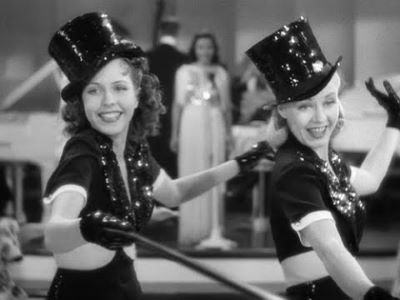
At the age of 15, Ann Miller appeared in RKO’s Stage Door (1937) as Ginger Rogers’ dance partner.
***
Despite her best efforts, her career began lagging toward the end of her RKO period, so her agent insisted she do a Broadway show to put her in vogue.
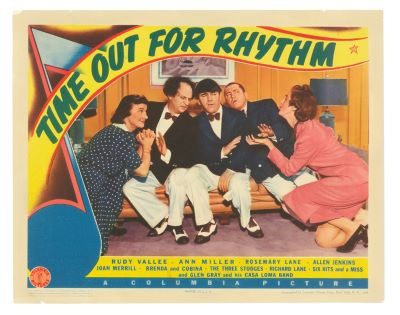 Performing on stage with the Three Stooges in George White’s Scandals of 1939, Ann garnered this critique from Robert Coleman of the New York Daily Mirror: “Ann is terrific. She’s an eye tonic, has loads of style and a personality that whirls with hurricane force across the footlights.” She named her favorite pair of tap shoes “Moe and Joe.”
Performing on stage with the Three Stooges in George White’s Scandals of 1939, Ann garnered this critique from Robert Coleman of the New York Daily Mirror: “Ann is terrific. She’s an eye tonic, has loads of style and a personality that whirls with hurricane force across the footlights.” She named her favorite pair of tap shoes “Moe and Joe.”
Her career poked along as a sideline star for a few more years with single movie contracts for Columbia and Republic, but just as she was about to take the lead role in a major musical, she decided to marry a millionaire and leave the business in 1946.
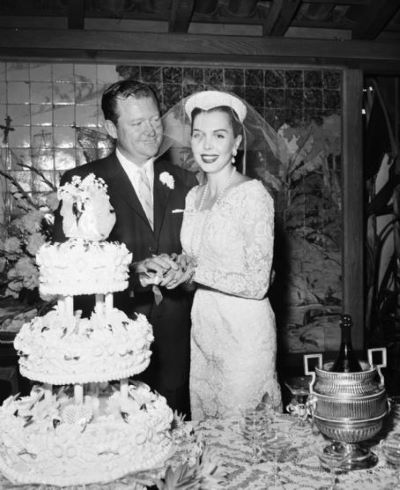 Ann was uncharacteristically tired and wanted to be taken care of. One year later, she divorced that husband after he pushed her down the stairs. She broke her back and lost her only baby.
Ann was uncharacteristically tired and wanted to be taken care of. One year later, she divorced that husband after he pushed her down the stairs. She broke her back and lost her only baby.
Longtime admirer Louis B. Mayer of MGM arranged for Ann to test for a secondary role in Easter Parade in 1948. She did so wearing a steel brace to support her back and won the part to dance alongside Fred Astaire. By the time she finally signed her second long-term studio contract, Ann Miller was known to have the fastest feet in Hollywood at 500 taps per minute. MGM insured her legs for $1 million dollars. She was 25 years old.
Ann married twice more but neither marriage stuck. She claimed that her only true love would not divorce his estranged wife because of his devout Catholicism. He telephoned her on the eve of her second marriage to beg her not to go through with it because he’d decided to divorce his wife after all. She told him it was too late. One year later when her true love died of a heart attack, her grief was all-consuming and destroyed her marriage within a couple years.
The third time around was not the charm either. She married an older, wealthy friend who she believed would make a good partner. She soon discovered he was, like her father, wholly committed to infidelity.
Ann Miller’s last screen appearance was in the television documentary The 100 Best Musicals, filmed in 2003. Her career spanned seven decades, outlasting the vast majority of other celebrity icons.
She died in 2004. We can continue to enjoy her exuberant company, courtesy of any one of the over 40 films in which she appeared.
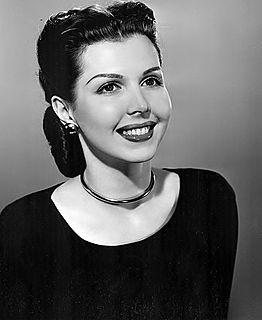
Do you have a favorite Ann Miller film? Comment below!
For another Old Hollywood story, See The Glamour Aesthetic of Gene Tierney.





6 thoughts on “Ann Miller and her Million-Dollar Legs”
Great article! Ann Miller was a terrific dancer. I never knew her career began alongside the Three Stooges. ?
Yes She had an interesting career!
Ann Miller not only was a talented dancer, she was gorgeous and always smiling…we all adored her..
yes for sure! Thanks for your comment 🙂
How long were Ms. Miller’s legs? I know she was 5’7″. Thanks.
That’s a great question! I don’t have that information at my fingertips but it certainly appears that her legs were longer than the average person at 5’7″ because her torso is on the shorter side. Her figure lent itself well to dancing! If you find out those specifics, feel free to post them here :-)). Thanks for your question – Maria